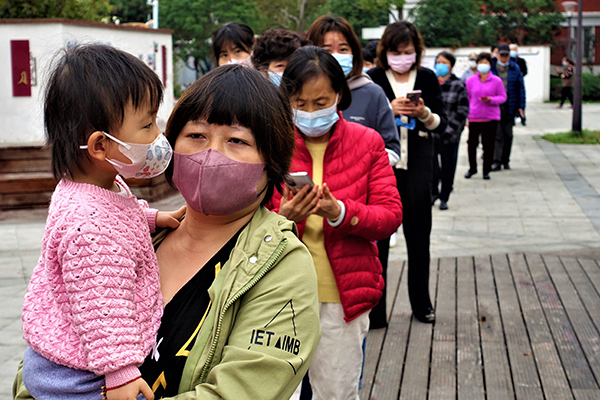It might surprise you, but the height of Chinese people has changed more in the last 50 years than in several centuries prior. Chinese men today average around 172.6 cm, while Chinese women measure approximately 160.2 cm—that’s a noticeable climb from past generations. These aren’t just statistics for health researchers to ponder. They’re real signals of how a country is growing—literally.
Height, as simple as it seems, mirrors a nation’s story. When you see a rise in the average height of Chinese males and females, you’re also seeing a rise in access to better nutrition, cleaner water, improved healthcare, and fewer childhood infections. In fact, many kids born in post-2000s urban China are noticeably taller than their parents were at the same age. Ask around in cities like Hangzhou or Guangzhou, and you’ll hear local parents saying things like, “My son is already taller than me—and he’s only 13!”
Historical Height Trends in China
If you really want to understand how height growth has played out in China, you need to look at the past—not just the data, but the context behind the numbers. Over the past 70+ years, the average height of Chinese citizens has steadily increased, and it’s not just genetics at work. It’s a story of poverty, reform, recovery, and rising living standards. Back in the 1950s, the average Chinese man stood at around 163.5 cm, which was well below global averages. Fast-forward to 2019, and that number jumped to 172.1 cm, according to the Ministry of Health China. That’s not a small change—it’s nearly a full head taller across just two generations.
What triggered that shift? A few things, really. Economic reform in 1978 was the turning point, opening up access to better food, education, healthcare, and infrastructure—especially in cities. Before that, food scarcity and poor rural conditions meant that kids often didn’t reach their full growth potential. But once the reforms kicked in, we saw measurable gains. For example, between 1985 and 2010, kids between ages 7 and 18 grew on average 6.9 cm taller. That’s a big jump in just 25 years. The urban population benefited first, of course, which led to an interesting dynamic: urban kids ended up taller than rural ones by 3+ cm, and that gap is still closing today.

Average Height of Chinese Men Today
If you’ve been tracking growth trends across Asia, you’ll notice something interesting about China—the average height of adult Chinese men has quietly edged upward over the past few years. As of July 2025, the national average sits at around 171 cm (5’7.3″), based on recent findings from CDC China. But that’s just the surface. When you break it down by age, men aged 18 to 25 are now averaging closer to 172.7 cm (5’8″), which suggests a gradual yet meaningful upward trend, especially among younger generations.
This jump in numbers isn’t happening by chance. Better childhood nutrition, wider access to urban healthcare, and even subtle shifts in bone development timelines are contributing factors. You’ll also notice that these gains are most pronounced in first-tier cities like Shanghai, Beijing, and Guangzhou, where urban residents benefit from early-life growth tracking and enriched diets. That’s why if you’re wondering whether environment or genetics plays a stronger role in height, here’s your clue: context matters more than people admit.
Average Height of Chinese Women Today
At present, the average height of adult Chinese women stands at 160.6 cm (just over 5 feet 3 inches). That number comes from recent health data pulled from WHO’s nutrition reports and domestic BMI studies. It’s a modest gain compared to figures from the early 2000s, but growth hasn’t been evenly distributed across the country. Urban women—especially those in cities like Beijing, Shanghai, and Guangzhou—tend to be taller than rural women by about 2–3 cm on average. That may not sound like much, but in terms of national percentile rankings, it’s a meaningful jump.
There’s a clear link between height and more than just genetics. Family income, education levels, and access to nutritious food all leave a measurable impact on growth—especially during adolescence. Girls from higher-income families tend to hit puberty a bit earlier, have better access to balanced meals, and score more favorably in long-term growth percentile charts. In contrast, in provinces like Guizhou or Gansu, where economic development still lags, average height among women is 1.5–2 cm shorter. These aren’t just numbers—they reflect real life patterns observed in classrooms, clinics, and community health programs.

Factors Influencing Height in the Chinese Population
The Truth Behind Height: It’s Not Just in Your Genes
When people talk about how tall someone is, the conversation often ends with “it’s just genetics.” But if you’ve spent any time looking closely at height factors in China, you’ll know that’s only half the story. Yes, Chinese genetics do set the blueprint—your parents’ heights matter, no doubt—but it’s the environment that determines whether that blueprint is ever fully realized.
Take iodine deficiency, for example. It’s a quiet disruptor in inland provinces, especially in places like Ningxia and parts of Yunnan. Kids growing up there are often 2 to 3 cm shorter on average than their coastal peers. Why? Because iodine fuels thyroid function, and the thyroid regulates growth. Without it, even the best genes can’t hit their target.
Real-World Growth Limits: What’s Holding You (or Your Kids) Back?
Now, here’s where it gets personal. If you’re a parent in China—or a teen looking to stretch those last few centimeters—nutrition and lifestyle are your leverage points. And let me be blunt: most people are blowing it.
Between exam stress, screen addiction, and late-night cram sessions, sleep cycles are wrecked. Growth hormone? Suppressed. Calcium intake? Often too low, especially in families skipping dairy due to outdated digestion fears. Add air pollution in cities like Xi’an or Shijiazhuang, and your body’s focus shifts from growing to surviving.
Want to know what you can control, starting today? Here’s what I tell families I’ve coached for years:
- Prioritize deep sleep between 10 PM and 2 AM – that’s your peak growth window. No exceptions.
- Double your daily greens and calcium-rich foods – tofu, bok choy, sesame paste. Easy, local, powerful.
- Get outside and move – even 30 minutes of jumping or sprinting can boost growth hormone naturally.
The Bigger Picture: Policy, Privilege, and Where You Live
Let’s not pretend that everyone’s on a level playing field. Government programs like the “School Milk Plan” and new food fortification policies have helped, especially in underdeveloped regions. Since 2020, the average height of Chinese teens has nudged up by 1.2 cm, according to national data. But here’s the reality most people ignore: if you’re in Shanghai or Shenzhen, your kid probably has a 4–5 cm advantage over someone in rural Henan. Not because they’re genetically superior—just because their healthcare access, food diversity, and environment are better.
So, what’s the takeaway? Don’t leave your height to chance. Even if you grew up in a region where height wasn’t a priority, your kids don’t have to repeat that cycle. Focus on what you can shift—food, rest, movement—and do it now. Growth windows close fast, and once they’re gone, they don’t come back.
Regional Differences in Height Across China
It might surprise you, but where you’re born in China can have a noticeable impact on how tall you grow. Kids from the north — places like Beijing, Shandong, and Inner Mongolia — consistently measure taller than those raised in the south. The numbers back it up: average male height in Beijing now stands at around 174.2 cm, while in Guangdong, it’s closer to 167.8 cm. That’s a 6+ cm difference, and it’s not just coincidence.
Why the North-South Height Gap Exists
There’s a mix of reasons behind these Chinese regional height differences, and most of them trace back to genetics, climate, and what ends up on your plate. Northern diets, loaded with wheat-based carbs, red meat, and dairy, provide more protein and calories — especially crucial during growth spurts. In contrast, southern diets lean lighter — more rice, seafood, and greens. That’s healthy, no doubt, but often lower in the total calorie count teens need to maximize height potential.
Climate plays a quiet but powerful role too. Northern provinces tend to be colder, which historically pushed populations to develop larger body frames and longer limbs — better for retaining heat. Over time, that led to the north-south height divide we still see in national health surveys today.
Here’s what the latest (July 2025) growth stats show:
- Beijing teens (age 17) now average 174.2 cm, up from 173.1 cm five years ago.
- Guangzhou teens average 167.8 cm, with minimal year-on-year growth.
- Shanghai, often considered a benchmark coastal city, holds steady at 172.3 cm for males aged 16–18.
And it’s not just city vs. city — inland provinces like Guizhou or Yunnan still lag behind more developed coastal areas by 3–5 cm on average.
But here’s the thing: just because you’re from a “shorter” region doesn’t mean your growth potential is capped. You still have room to grow — especially if you’re under 21. Focus on these essentials:
- Stretch-based training: Hanging, jumping rope, swimming — all help decompress the spine.
- High-density nutrition: Protein, calcium, vitamin D — every day, no excuses.
- Deep sleep: HGH is mostly released between 10 PM and 2 AM — miss that window, and you lose out
How the Chinese Compare to Other Populations
A Look at Where China Stands in the Height Race
When it comes to average height, China has made impressive progress in the last few decades—but there’s still a noticeable gap when compared to some of its neighbors. As of July 2025, the average Chinese male measures about 172.2 cm, with females coming in at 160.6 cm. Compare that to South Korea, where men average 174.6 cm and women 162.3 cm, and you start to see where the differences lie. These aren’t just random numbers—they reflect long-term trends tied to national nutrition programs, lifestyle shifts, and even cultural attitudes toward health and growth.
It gets more interesting when we dig into youth percentile charts. South Korean teens are growing taller at faster rates, often ranking in the top 20–30% globally, while Chinese teens still hover around the 35th–45th percentile range. Japan is another close neighbor with similar averages—about 172.5 cm for men and 158.8 cm for women—but they saw a major growth jump during the 80s and 90s. Why? A sudden shift in diet, better school health programs, and a stronger focus on early development. Meanwhile, Southeast Asian countries like Vietnam and the Philippines still lag behind China by roughly 3–6 cm, though some urban pockets are starting to close the gap.
Why This Comparison Matters If You’re Still Growing
This isn’t just trivia—it’s a wake-up call. If you’re under 21 (and especially under 18), your body still has open growth plates. What these global differences tell us is simple: height is influenced by more than genetics. Countries like South Korea and Japan didn’t just grow taller by chance. They followed specific national strategies that boosted youth height potential.
Let’s break it down with some real-world takeaways:
- Korean schools provide structured growth-focused meals—more calcium, lean proteins, and timed physical activity.
- Japan’s post-war diet reform introduced more dairy, fish, and high-nutrient vegetables, leading to measurable growth over two generations.
- Urban Chinese youth are now growing 1.5 cm taller per decade thanks to improved diet and reduced early-life malnutrition.
Now here’s the kicker—you can apply these same principles right now. Focus on:
- Sleeping 9–10 hours per night to support natural HGH production
- Eating 1.2–1.5g of protein per kg of body weight daily
- Incorporating daily mobility and spinal decompression exercises
The secret most people miss? Your height is still flexible during adolescence. And those percentile charts? They aren’t fixed. You can move up, if you follow the right blueprint. Most importantly, don’t wait until it’s too late. Growth slows fast after 18—and if you’re 15 or younger, every month counts.
The Role of Diet and Nutrition in Height
Food isn’t just fuel—it’s your body’s building material, especially during your growth years. In China, there’s been a clear connection between evolving diets and rising average heights over the past few decades. In fact, since the mid-1980s, 18-year-old boys have gotten over 11 centimeters taller on average. That’s not genetics—it’s what’s on the plate. Shifting from a grain-heavy traditional Chinese diet to one richer in animal protein, dairy, and micronutrients has made a noticeable difference.
But let’s not oversimplify this. The nutritional boom hasn’t reached everyone equally. Rural areas are still playing catch-up. While kids in cities now grow up on milk, eggs, and fortified cereals, many in the countryside still rely heavily on rice, noodles, and vegetables—with protein and calcium often in short supply. As a result, stunted growth remains a real issue. A 2023 UNICEF report found that around 15% of rural children in China show signs of undernutrition that directly impact their height potential.
Quick Insight: The tallest teens in China today come from provinces like Jiangsu and Zhejiang—places where calcium and protein intake are consistently above the national average.
What’s Changed in Chinese Diets Over Time?
The past two generations have seen some subtle but powerful shifts in how—and what—people eat. If you’re wondering why today’s youth are growing taller than their parents, these are the three biggest dietary changes worth noting:
- Higher protein intake
Meat, eggs, and dairy—once luxuries—are now staples for many urban families. This gives kids the amino acids they need for proper muscle and bone development. - More reliable calcium sources
Tofu, milk, leafy greens, and even fortified beverages are boosting bone density during critical growth years. - Processed food—both help and harm
Calorie intake is up, but not always in the right ways. Sugary snacks and low-nutrient carbs crowd out the good stuff, especially where food education is lacking.
Now, if you’re still in your growth window (say, anywhere from age 8 to 18), the good news is: there’s still time to make changes that count. And if you’re a parent reading this, it’s worth paying attention to some specifics.
- Aim for at least 1,000 mg of calcium daily during peak growth years.
- Include animal protein in every main meal (think chicken, eggs, fish, lean pork).
- Don’t skip vitamin D—sunlight helps, but fortified foods or supplements may be needed too.
You don’t have to overhaul your entire lifestyle overnight. But even small, consistent upgrades in your diet can tilt the odds in your favor. Especially when it comes to height, the body rewards patience and good fuel.
Predicting Future Height Trends in China
If you’re wondering how tall the next generation in China might grow, you’re not alone—and the answer is already unfolding in front of us. With rapid urbanization, smarter child health tracking, and nationwide investments in better nutrition, China is on course to see a noticeable uptick in average height—especially in cities. According to data from 2023, Chinese boys at age 18 now average 172.1 cm, while girls average 160.6 cm, both of which are the highest recorded figures to date. These aren’t just numbers—they’re indicators of how child development policies and modern healthcare tools are reshaping outcomes.
What’s truly changing the game is the integration of AI in health and smart data monitoring. Pediatricians in major cities now use predictive tools that don’t just estimate future height—they help guide it. For example, many clinics in Shanghai and Guangzhou use growth algorithms that analyze sleep, activity, and nutrition patterns in real time, flagging anything that could impact growth before it becomes a problem. Parents get alerts. Adjustments are made early. And as a result, kids in these areas are trending taller than national averages from just a decade ago.
- Related post: Does cheese increase height?



